Mount Kenya is considered the second highest mountain in Africa, behind Kilimanjaro. Surrounded by other famous climbing peaks such as Batian Peak (5.199m) and Nelion Peak (5.188m), the most famous for hikers is Lenana Peak (4.985m).
If you want to climb to the top you will have to count that you will need 3-4-5 days also hiring guides, porters and cooks. There are 5 possible routes and many accommodation possibilities. So the price of the ascent to the peak will vary depending on how many days you do, which route you decide, which accommodation you choose …
If you want to enjoy it in a more relaxed way, we recommend that you walk to Lake Ellis, located at 3.455 meters above sea level, on an excursion where you will enjoy stunning views, shades of green that will leave you captivated, few (or nothing) tourists around you and a twinning with nature that will not leave you indifferent.
How to get there?
From Nairobi, Mount Kenya is a 4-hour drive using the Embu Road. There is good paved road to the foot of the mountain. We accessed Mount Kenya National Park through the Chogoria Gate. The road to get there is very beautiful but the last stretch of road to the gates of the park is a rugged dirt road that can be virtually impassable in the rainy season, when it is essential to use the 4×4.
When to visit Mount Kenya?
First of all, Mount Kenya is located at the equator, at an altitude of 4,000 m where it is usually very cold and icy at night. If you want to go trekking, you have to be prepared for temperatures at night below zero.
Kenya has two rainy seasons, the long rains from mid-March to mid-June and the short ones from September to October. You can climb Mount Kenya all year round, but especially during the long rainy season, you need to be prepared for some heavy rain and muddy slopes. The good news is that even in the rainy season, there is usually sun for much of the day (10am to 3pm). Outside of the rainy season, you can expect plenty of sunshine.
Permits and prices
You will need to pay for your entrance to the Chogoria Gate. We found the guy charging the tickets a few miles lower for the dataphone coverage. Remember that they only allow you to pay by card or with Mpesa.
Entrance fee per person to the park is 30$ per day for non-resident tourists. You have different packs depending on the days you want to be there. If you plan to stay more than a day, check out their website to see which option can best suit what you will be doing. If you choose to go up there by car there is a fee of 300 KSH. You will also have to pay for camping on the lake, if you want to spend the night inside the park (20$ per person).
What to bring?
If you decide to spend the night, make sure you are fully equipped with everything you need to spend the night there: bring food, water, firewood, sleeping bags, warm clothes, and so on. Time changes drastically. With a moment the state of the weather changes: it can be sunny and almost immediately it becomes cold or even worse rain.
Bring a raincoat in case it rains and an extra change of clothes just in case the rain catches you on the way. We recommend making a fire and also wearing a hat, gloves, thermal T-shirt, coat and thick socks. The sleeping bag should be suitable for low temperatures. Also bring a flashlight and a garbage bag to take away any waste you may generate.
What to do in lake Ellis?
Mount Kenya is home to five glacial lakes and a good number of peaks. The lakes are Lake Ellis, Lake Michaelson, Lake Rutundu, Lake Alice and Lake Hohnel. One of the most popular is Lake Ellis. For those who do not want to climb Mount Kenya, you can reach Lake Ellis on foot or by car and do different activities from there, including:
– Walking route to Lake Ellis
The route of about 14 km in total leaves the gate of Chogoria and reaches the shore of the lake. It is a route of about 2h and 30 min the round trip and 2h and 30 min the return. Think that on the way there are quite a few high altitude climbs, so depending on how you are physically you will need some breaks to continue. The landscape is very beautiful and we advise you to stop a few times to take photos and enjoy the scenery.
– Route with your 4×4 to Lake Ellis
The same route that is used to reach the lake on foot, you can also go there with your vehicle 4×4. The road is very off-road and there are high ups and downs with a few holes in the ground.
It is important that if you choose for this option, be prepared and know your vehicle. You will need to use the reducer at many times. We were in the early days of the car, and were advised to do so very slowly and calmly (which we think is the way to get there). The Rangers told us that they once had to go to the rescue of a car that had not reached the lake.
Now, if you choose to do it, you will see that the landscape you are going through changes as you gain altitude and you will have a super exciting adrenaline after going up and down the road, which will make you sigh and hallucinate with the landscape when you arrive and you will be speechless. Also, if you are lucky and Mount Kenya is cloudless, it will be impressive! When we got to the lake, it was cloudy but there was a moment when it cleared up and it was spectacular.
– Sleep in lake Ellis
You can camp directly by the lake. When we were there, we were alone so we chose the place we liked best and which was relatively flat for the rooftent above the car. The campsite per person is priced at 20$ per person per night. If you are lucky and the sky is not cloudy, you will see a sky full of stars.
We advise you to keep warm slowly and make a fire on the floor (in a controlled way), which will prevent you from getting cold during the low night temperatures.
– Small walking route around Lake Ellis
Around the lake it is possible to take small walks that will help you to see the lake from different perspectives and enjoy the landscape. The next day of sleeping there we took a short walk under the foot of Mount Kenya. Lost in the immensity of nature, we enjoyed a spectacular morning! In addition, you can make different excursions to waterfalls and caves near the lake.
Even if you don’t climb to the top of Mount Kenya, getting inside the park and enjoying a green landscape between mountains, peaks, lakes and stunning views is an experience you can’t miss if you’re in Kenya and you like the hiking and nature.


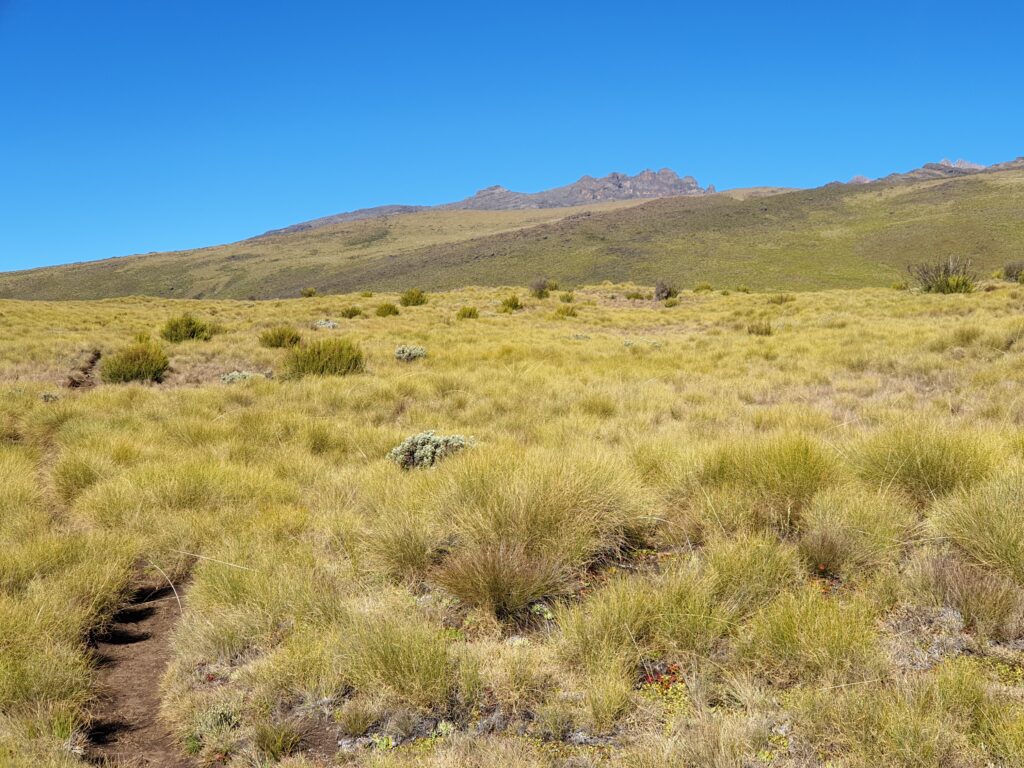
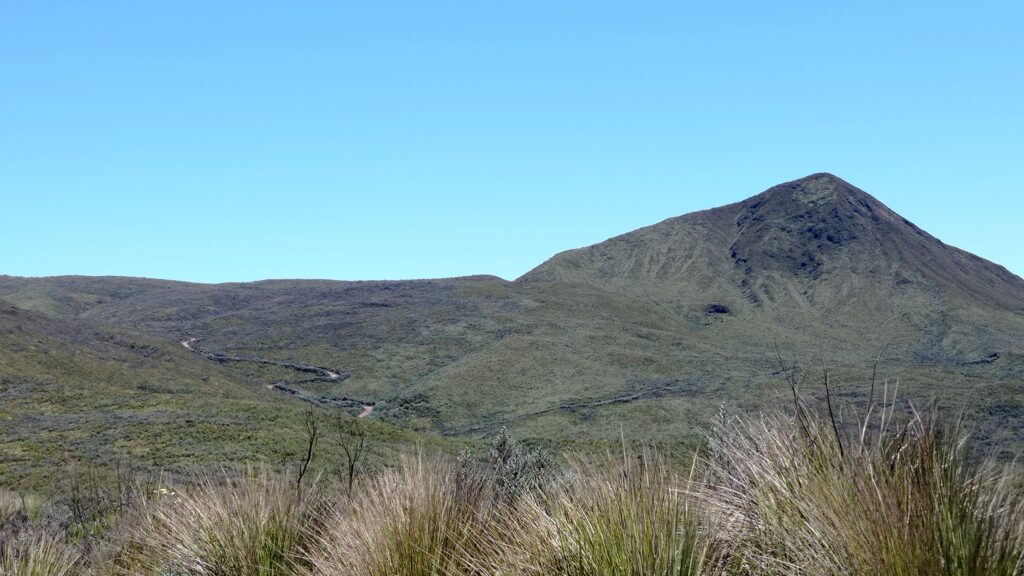
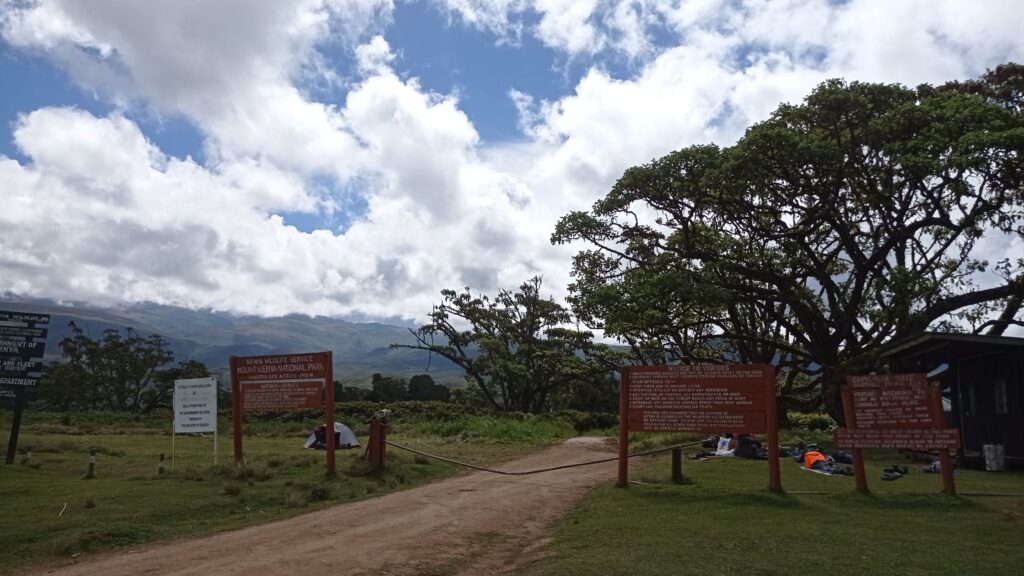
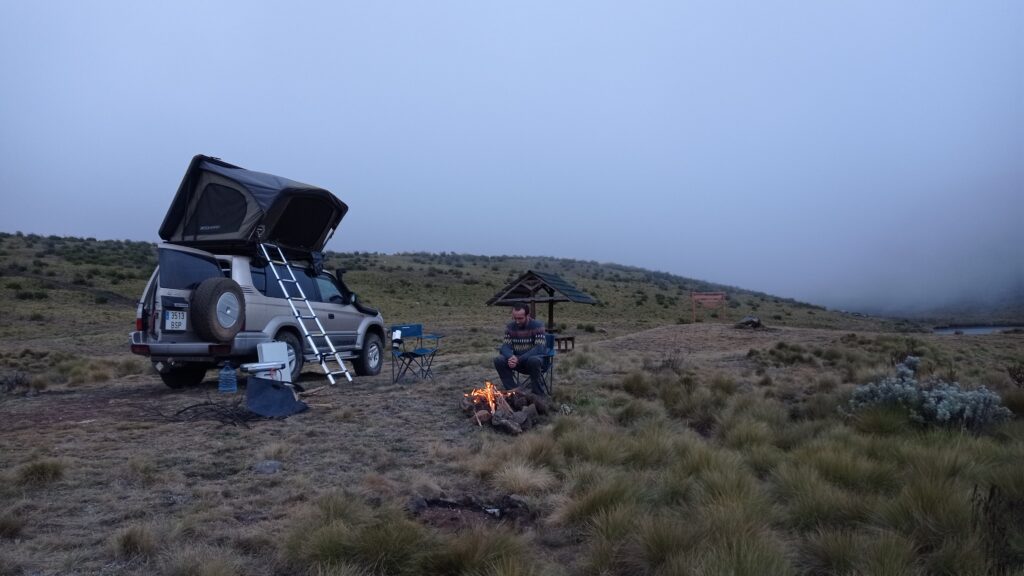
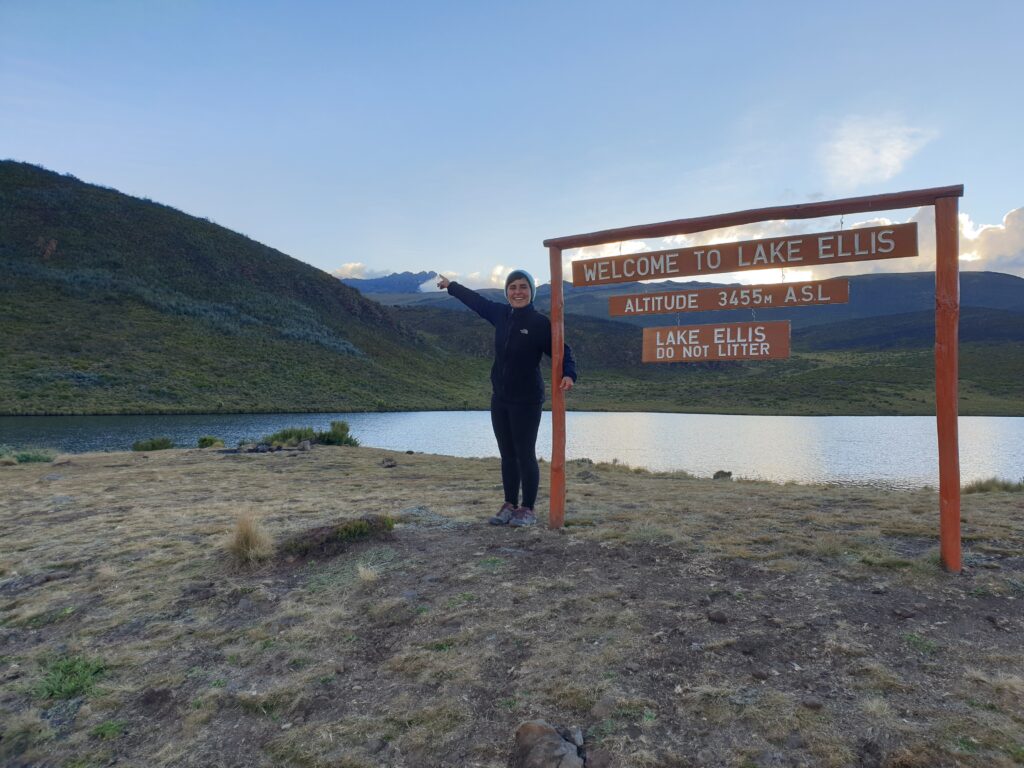


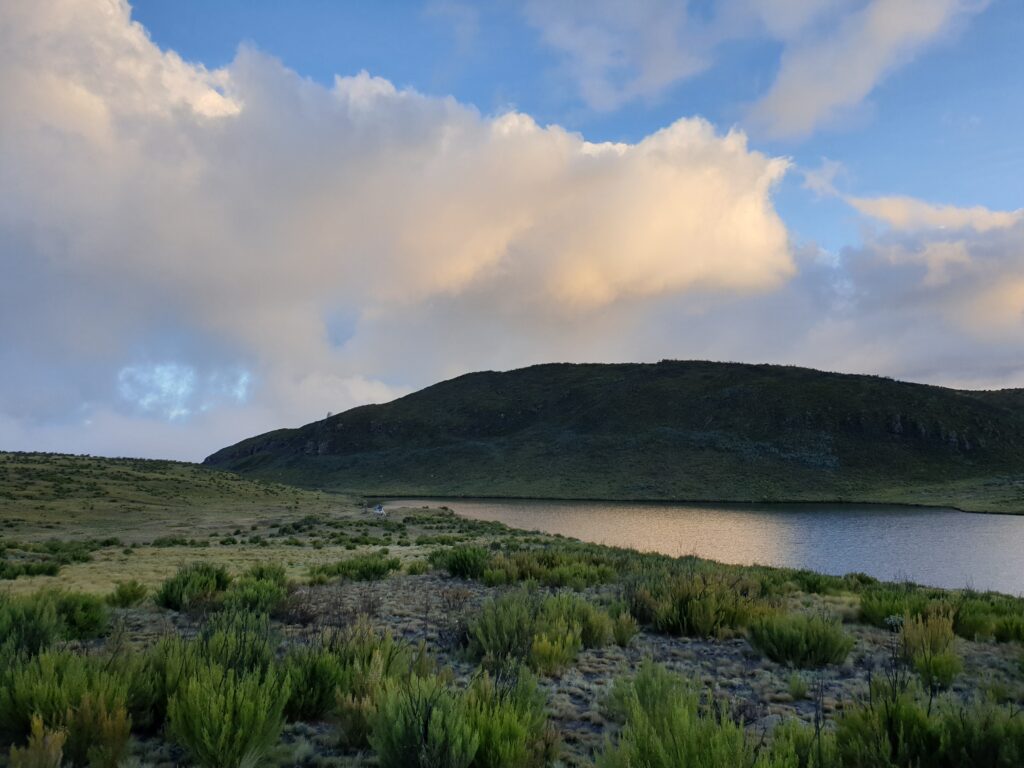
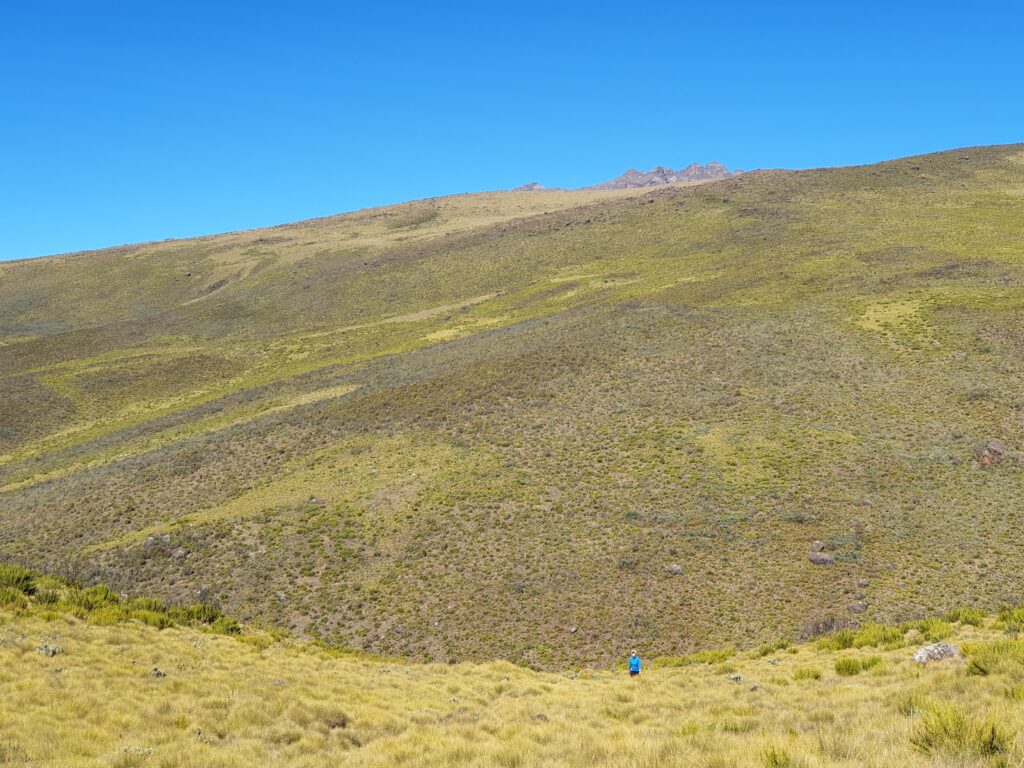
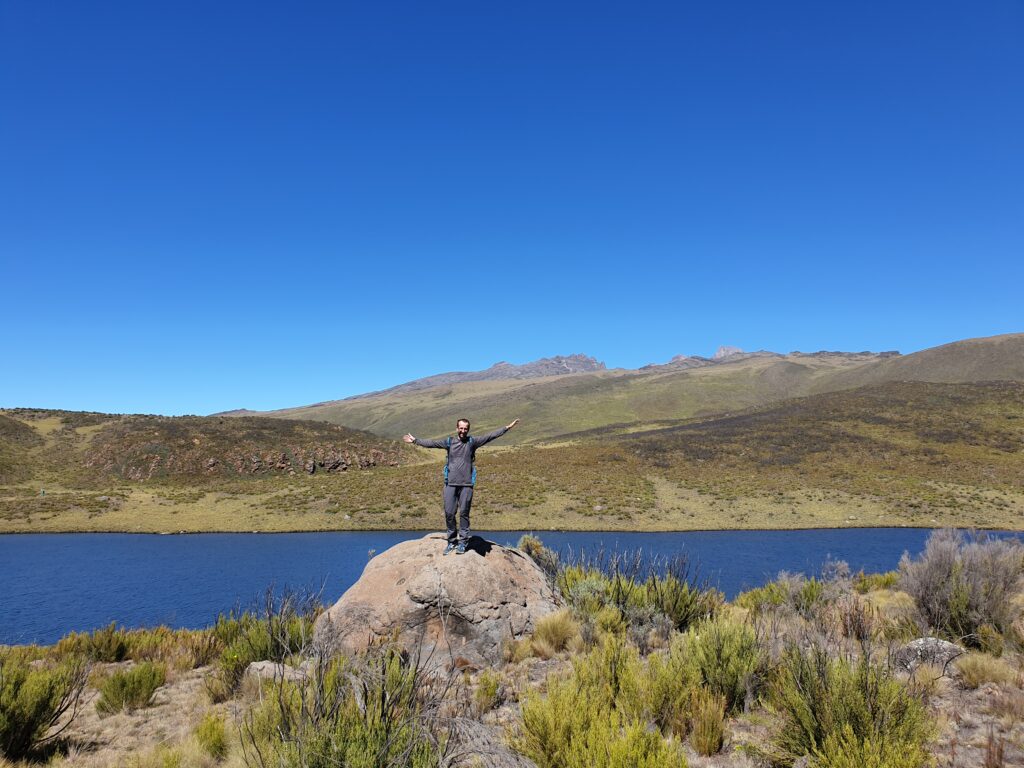

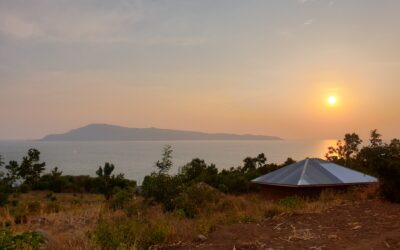



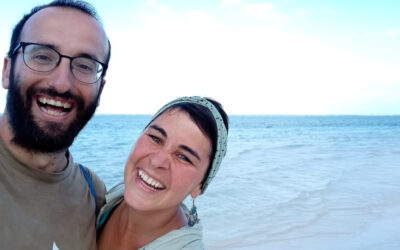
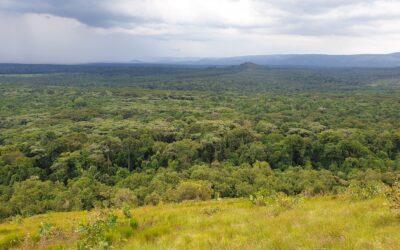
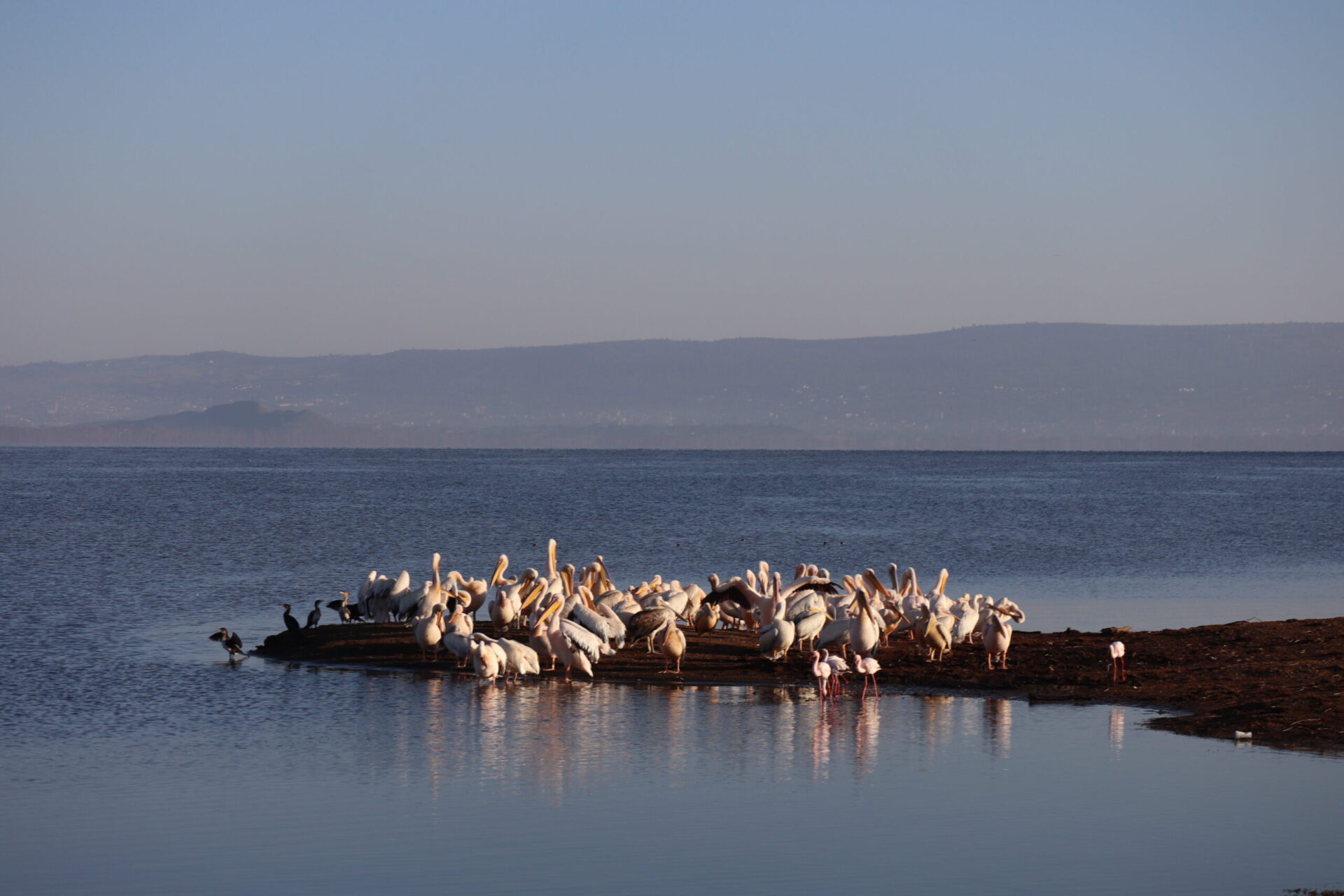

0 Comments